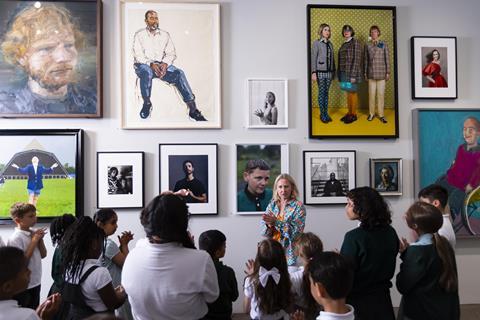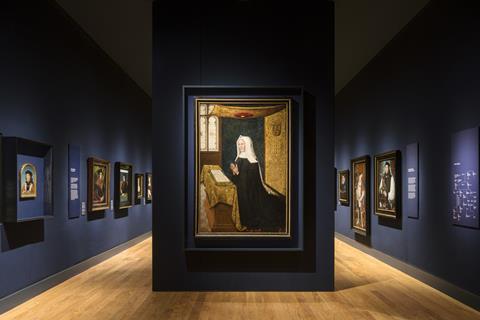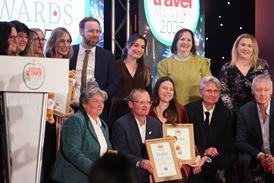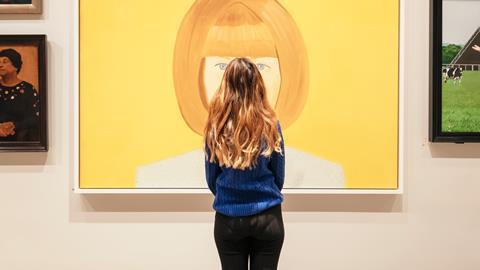To say there has been a lot going on at the National Portrait Gallery in London is an understatement. We went along to find out more.
The new school year heralds the start of the National Portrait Gallery’s transformed learning offer for pupils. It reopened its doors to the public in June following the most extensive transformation of its building since 1896.
So what exactly has changed? Well, for a start, the world’s greatest collection of portraits, which span an incredible six centuries, has been re-presented in renewed galleries and revitalised spaces.

Public space around the gallery has increased by a fifth - made possible by converting office space into top-lit galleries in the newly named Watson Wing which houses the contemporary collection.
The Gallery has taken steps, responding to audience feedback, to present an inclusive picture of the people who have contributed to the history of the UK such as through the Reframing Narratives: Women in Portraiture collection.
Now, 48% of the portraits in the 20th and 21st century galleries are of women (up from 35%) and 11% of all works on display are of UK ethnic minority sitters (up from 3%).

On the ground floor, there’s a new ‘History Makers’ display which features the likes of Wimbledon champion Andy Murray, grime artist Stormzy and England footballer Lucy Bronze - this is a great addition and one that will definitely be popular for school groups.
A new state-of-the-art Learning Centre
The Mildred and Simon Palley Learning Centre has been a major element of the project and has more than doubled the Gallery’s provision for education. Previously where there was one studio, there are now three - The Law Photography Studio, featuring digital and photography equipment, The Art Studio and The Clore Studio.

In addition there are improved facilities such as a lunchroom and for the first time, an outdoor space, The Mildred Garden, which is a lovely area for pupils to enjoy.
Programme for primary and secondary schools
There are new workshops, sessions and events for schools from September which have been co-designed by artists, historians, educators and teachers to help engage students with the collections of portraits to learn not just about art but about history, society and identity.
Sessions for primary schools include Significant People: the Search for Mary Seacole in which your class will be taken back in time to become history detectives and explore the amazing life and impact of Mary Seacole who was a nurse, traveller, a businesswoman and writer from Jamaica. There are links to history, art & design and students will create their own portraits after being inspired by her portrait and her story.

For secondary students, the sessions use portraiture to help them learn about their own identity, British society and their place within it. Students come face-to-face with people past and present who contribute to the rich identity and diversity of British history, art and culture.
The Identity Through Portraiture photography workshops for KS3-5 art & design and photography students feature inspiration from different artists including Shirin Neshat, Gillian Wearing and Dorothy Wilding.
There are also sessions for SEND groups as well as a CPD programme support teachings to interpret portraiture and develop ideas for classroom work and Gallery visits.
My tour of the new-look National Portrait Gallery
Just like the strokes in the portraits on display, every single detail has been considered in the £41m transformation of the National Portrait Gallery. Everything from how collections are displayed down to the type of flooring, lighting and colours used.
Press officer Perry Stewart, my guide for the morning, even explains how they chose the colours of the walls to complement the portraits: “They looked at which colours were used throughout a certain collection of paintings and picked those out to enhance the portraits.”

Alongside the vibrant colours throughout the reimagined gallery, what struck me was how bright and welcoming it is, inviting you to see many of the portraits in quite literally ‘a different light’. This has been an important aspect for the team throughout the three-year project, the biggest of its kind since the gallery opened in 1896.
Many original windows, doors and roof lights have been opened to bring in natural light which has allowed more delicate works to be displayed and enjoyed by visitors.
The portraits on display from the world’s biggest collection, span an incredible six centuries taking visitors on a journey from the Middle Ages to the present day. They are chronologically arranged so our tour begins on the third floor with the Tudor collection and the gallery’s oldest portrait of King Henry VII which dates back to 1505.
I was taken aback by the Portrait of Mai by Sir Joshua Reynolds which depicts Mai (Omai) a Polynesian who came to the UK with Captain James Cook. Jointly acquired by the National Portrait Gallery and the J. Paul Getty Museum, the seven foot high portrait is described as one of the most important, influential portraits in the history of British art and is the gallery’s most significant acquisition to date.
For information about school visits to the National Portrait Gallery call 020 7306 0055 or email education@npg.org.uk.
















